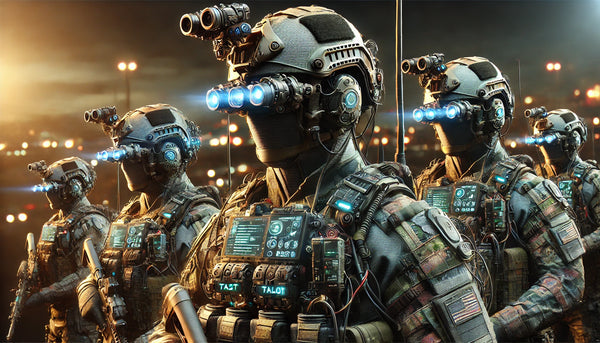Future of Special Forces: How Military Jet Suits Are Revolutionizing Combat Tactics
August 01, 2025

MISSION BRIEF: JET SUIT WARFARE
TOP SECRET – EYES ONLY
📍 Location: Classified
🕒 Time: Zero Dark Thirty
🪖 Operator: You
Mission Directive: The future of warfare isn’t coming—it’s already here. Jet suits—once the stuff of sci-fi dreams—are being tested for tactical reconnaissance, rapid deployment, and urban combat. Your objective? Understand how this bleeding-edge tech is reshaping special operations and air assault tactics.
Buckle up, because the battlefield is about to go vertical.

GEAR UP: THE ANATOMY OF A JET SUIT
Before you jump out of a C-130 at 30,000 feet, you need to know your gear. Forget parachutes. This isn’t your grandpa’s HALO jump.
1. The Core Power Unit (Your Engine Room)
Jet suits aren’t just strapping on a jetpack and hoping for the best. These exoskeleton-like rigs integrate miniature gas turbines strapped to your arms and back, producing over 1,000 horsepower in some models.
- Richard Browning’s Gravity Industries suit runs on five micro gas turbines burning Jet A-1 fuel.
- JetCat P400s, a common turbine type, can output over 100 pounds of thrust each.
- Flight Time? 5-10 minutes of controlled chaos.
- Top Speed? 85+ mph, depending on weight and aerodynamics.
2. Thrust Vectoring (Mastering the Sky)
You don’t just "fly." You balance, tilt, and control thrust using real-time muscle movement. Unlike Iron Man’s repulsors (which ignore physics), jet suits require extreme core strength and balance—making them perfect for highly trained operators but difficult for the average soldier.
- Control system: Pilots adjust their hand jet turbines for balance and movement.
- Power-to-weight ratio: More efficient than early jetpacks, but requires precision to avoid faceplanting at Mach 0.5.
3. Fuel & Endurance (The Achilles Heel)
Jet suits burn fuel like a fighter jet on afterburner. Current models operate for 5-10 minutes max before running dry—making them perfect for rapid insertions but limited for sustained combat.
- Future enhancements: Hydrogen fuel cells & electric microjets could push endurance past 20+ minutes within the next decade.

OPERATIONAL USE CASES: JET SUITS IN COMBAT
RECON & RAPID INSERTION
Need to get eyes on target in enemy-held terrain? Jet suits let special forces fly in low and fast over hostile zones, land, gather intel, and exfil before the enemy even knows what happened.
- British Royal Marines tested Gravity Industries suits for ship-boarding operations.
- SOCOM & NATO forces are exploring tactical exfiltration missions using jet suits instead of helicopters.
URBAN WARFARE & CQB
Picture this: A city under siege. Snipers on rooftops. Enemy combatants bottlenecking key entry points. Instead of kicking down doors, operators come in from above.
- Vertical Breaching: Special ops teams could fly into high-rises or rooftops, eliminating threats without touching the ground.
- Night Ops & Stealth: Thermal suppression & quieter electric turbines could make jet suit operators almost invisible at night.
COMBAT LOADING & WEAPONS MOUNTING
Right now, most jet suits are unarmed—because controlling a high-speed human missile and wielding a rifle at the same time is... tricky.
However, experimental prototypes are exploring:
- Wrist-mounted weapons (think small-caliber PDWs or smart pistols).
- Shoulder-mounted drone deployment—launching recon UAVs mid-flight.
- AI-assisted HUDs for augmented targeting while flying.

THE FUTURE: WHERE JET SUITS ARE GOING
1. MILITARY-GRADE EXOSUITS + JET PROPULSION
Imagine a powered exoskeleton fused with jet technology. Think Titanfall meets real-world combat. This could enable:
- Heavy armor integration (jet-assisted movement with ballistic shielding).
- Superhuman carrying capacity (jet-boosted strength for gear-heavy deployments).
2. ELECTRIC PROPULSION & SILENT FLIGHT
The loud, fuel-burning gas turbines will eventually give way to:
- Plasma thrusters & ion propulsion (already in early experimental stages).
- Silent VTOL jet suits, using next-gen battery tech for near-silent insertions.
3. SWARM TACTICS & MULTI-UNIT DEPLOYMENTS
Why send one operator when you can send a squadron of jet suit troopers? Future battlefields may see:
- Jet suit formations working alongside drones & AI-assisted combat systems.
- Autonomous refueling units extending flight times indefinitely.
FINAL DEBRIEF: ARE JET SUITS BATTLEFIELD-READY?
Reality Check: While jet suits are operational, they aren’t replacing helicopters or paratroopers anytime soon. The biggest hurdles? Fuel limitations, training requirements, and payload capacity.
However, for specialized missions, jet suits are already proving game-changing. Within 10-15 years, expect to see:
✅ Jet-powered special forces infiltrations.
✅ Urban combat utilizing vertical dominance.
✅ Next-gen silent propulsion for covert ops.
MISSION STATUS: COMPLETE
You are now briefed on the future of jet suit warfare.
The question is: Are you ready for what comes next?
🔻 END TRANSMISSION 🔻

Read. Learn. Gear Up.
Stay sharp with in-depth article, survival insights, and the latest gear trends
